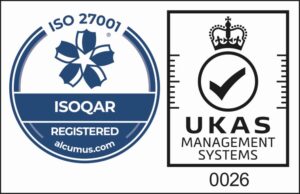Bridging Horizons: IT MSPs and the Seamless Integration of Hybrid Cloud Environments
In today’s dynamic business landscape, the hybrid cloud has emerged as a transformative force, offering organizations the flexibility to blend on-premises infrastructure with cloud resources. As hybrid cloud adoption accelerates, the role of IT Managed Service Providers (MSPs) in orchestrating and optimizing these complex environments becomes paramount. Let’s delve into how IT MSPs are pioneering the integration of hybrid cloud, shaping the future of flexible and efficient IT ecosystems.
1. Architecting Hybrid Cloud Strategies:
IT MSPs are at the forefront of designing holistic hybrid cloud strategies tailored to each organization’s unique needs. By analyzing existing infrastructure, business goals, and workloads, MSPs create roadmaps that seamlessly integrate on-premises systems with public and private cloud solutions. This strategic alignment enables organizations to optimize resource utilization and scalability while maintaining control over critical data.
2. Hybrid Cloud Management:
The complexity of hybrid environments demands adept management. IT MSPs offer centralized management tools that allow organizations to monitor, provision, and manage resources across diverse platforms. This unified approach simplifies IT operations, enhances visibility, and ensures consistent performance across the entire hybrid infrastructure.
3. Cost Optimization and Scalability:
One of the primary benefits of the hybrid cloud is cost efficiency. MSPs leverage their expertise to identify workloads suitable for migration to the cloud, optimizing resource allocation and scaling as demand fluctuates. This dynamic resource allocation maximizes cost savings while maintaining optimal performance.
4. Data Security and Compliance:
Data security remains a top concern in hybrid environments. MSPs play a critical role in implementing robust security measures that protect sensitive information across on-premises and cloud environments. They ensure compliance with industry regulations and standards, providing peace of mind to organizations operating in highly regulated sectors.
5. Seamless Application Integration:
Applications often span multiple environments in a hybrid setup. MSPs facilitate seamless integration of applications, ensuring they function harmoniously across platforms. This minimizes disruption, enhances user experience, and supports the organization’s evolving needs.
6. Disaster Recovery and Business Continuity:
MSPs excel in designing comprehensive disaster recovery and business continuity plans for hybrid environments. By leveraging cloud resources for data backup and recovery, organizations can ensure minimal downtime and rapid data restoration in the event of a disruption.
7. Performance Optimization:
The hybrid cloud’s distributed nature requires careful optimization to maintain performance. IT MSPs continuously monitor the environment, identifying bottlenecks and fine-tuning resources for optimal speed and responsiveness.
8. Vendor Management and Integration:
Navigating the multitude of vendors in a hybrid ecosystem can be daunting. MSPs serve as liaisons, managing vendor relationships, negotiating contracts, and ensuring smooth integration of various services.
Embracing Hybrid Cloud with IT MSPs:
As businesses harness the benefits of hybrid cloud environments, IT MSPs emerge as indispensable partners. Their expertise in strategizing, implementing, and managing hybrid architectures empowers organizations to achieve the agility, scalability, and efficiency required to thrive in today’s technology-driven landscape. By collaborating with IT MSPs, businesses can seamlessly integrate the best of both worlds—on-premises and cloud—ushering in a new era of IT flexibility and innovation.




